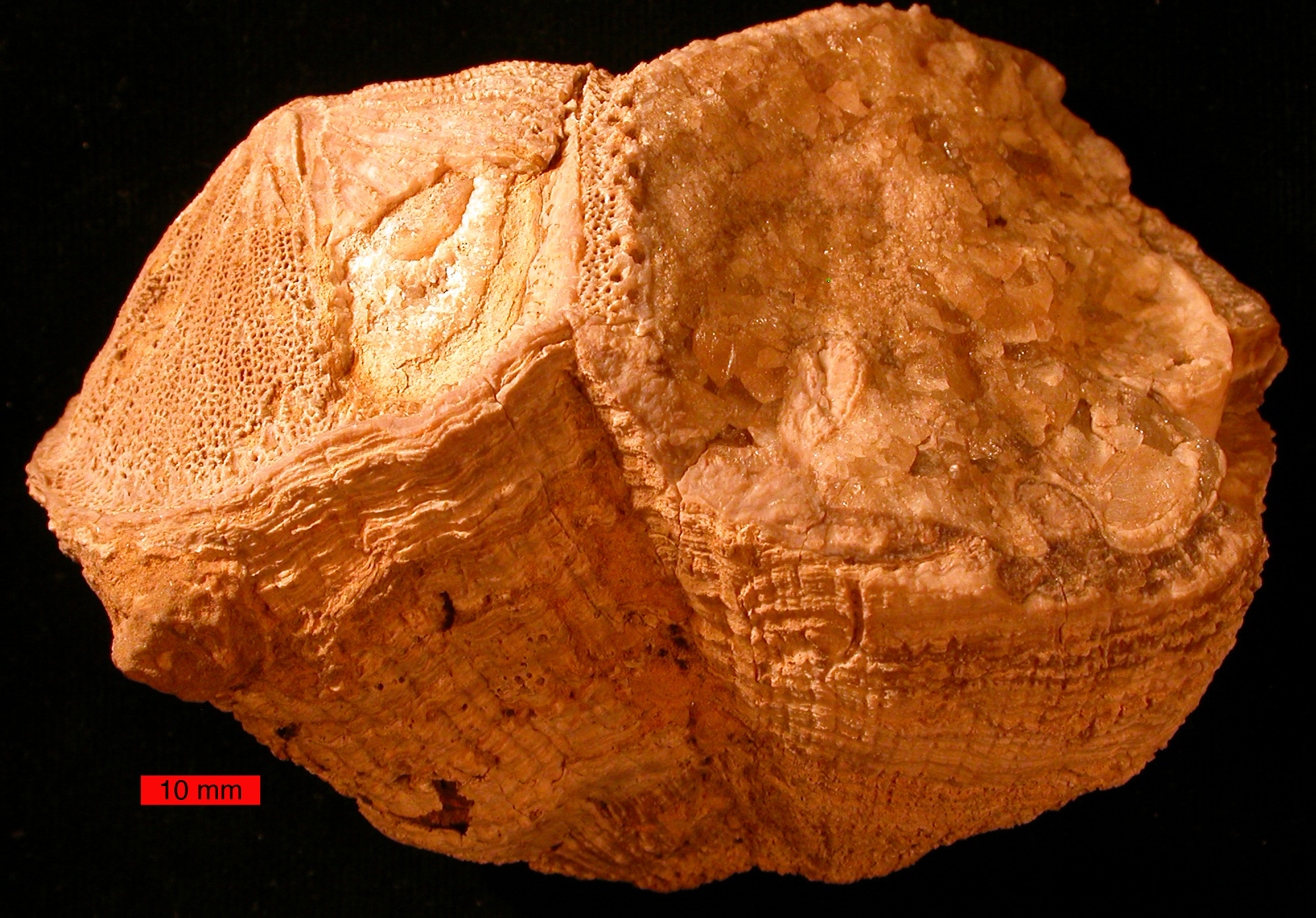- Rudists
Taxobox
name = Rudists

image_width = 240px
image_caption = Rudist bivalves from the Cretaceous of the Omani Mountains, United Arab Emirates. Scale bar is 10 mm.
fossil_range =Jurassic toLate Cretaceous
regnum =Animal ia
phylum =Mollusca
classis =Bivalvia
subclassis =Heterodonta
ordo = Hippuritoida
ordo_authority =
subdivision_ranks = Families
subdivision =
*Antillocaprinidae
*Caprinidae
*Caprotinidae
*Diceratidae
*Dictyoptychidae
*Hippuritidae
*Ichthyosarcolitidae
*Plagioptychidae
*Polyconitidae
*Radiolitidae
*Requieniidae Rudists are a group of bizarrely shaped marine
heterodont bivalves that arose during theJurassic , and became so diverse during theCretaceous that they were major reef-building organisms in theTethys Ocean . The Jurassic forms were elongate, with both valves being similarly shaped, often pipe or stake-shaped, while the reef-building forms of the Cretaceous had one valve become a flat lid, with the other valve becoming an inverted spike-like cone. They were among the many animal groups that perished during theCretaceous–Tertiary extinction event .The rudists are, according to different systematic schemes, placed in the orders Hippuritoida or Rudistes (sometimes Rudista). Their "classic" morphology consisted of a lower, roughly conical
valve that was attached to the seafloor or to neighboring rudists, and a smaller upper valve that served as a kind of lid for the organism.Their classification as true reef-builders is controversial, yet they were one of the most important constituents of
reefs during the Cretaceous period. [http://www.palaeos.com/Mesozoic/Cretaceous/Aptian.html] At one point, rudist reefs fringed theNorth America n coast from theGulf of Mexico to the present-day Maritime Provinces. Because of their highporosity , rudist reefs are highly-favoredoil trap s.ee also
*"
Inoceramus "References
* [http://www.paleotax.de/rudists/intro.htm "An Introduction to the Paleontology of Rudist Bivalves." (Accessed 7/2/06)]
* [http://www.palaeos.com/Mesozoic/Cretaceous/Aptian.html Paleos.com: "The Aptian Age" (info on rudists) (Accessed 7/2/06)]
Wikimedia Foundation. 2010.
